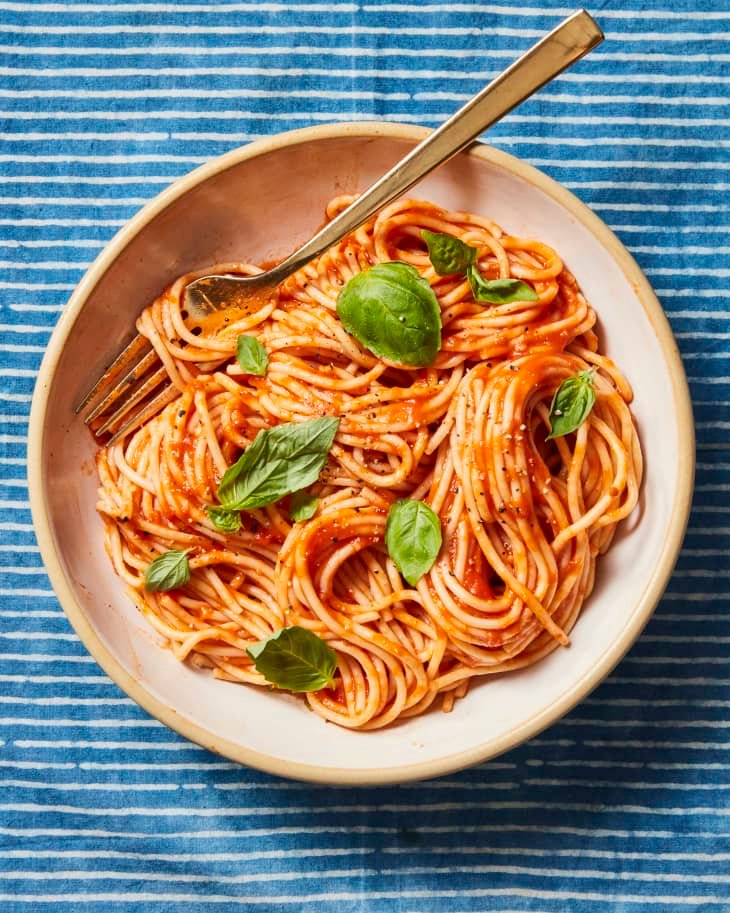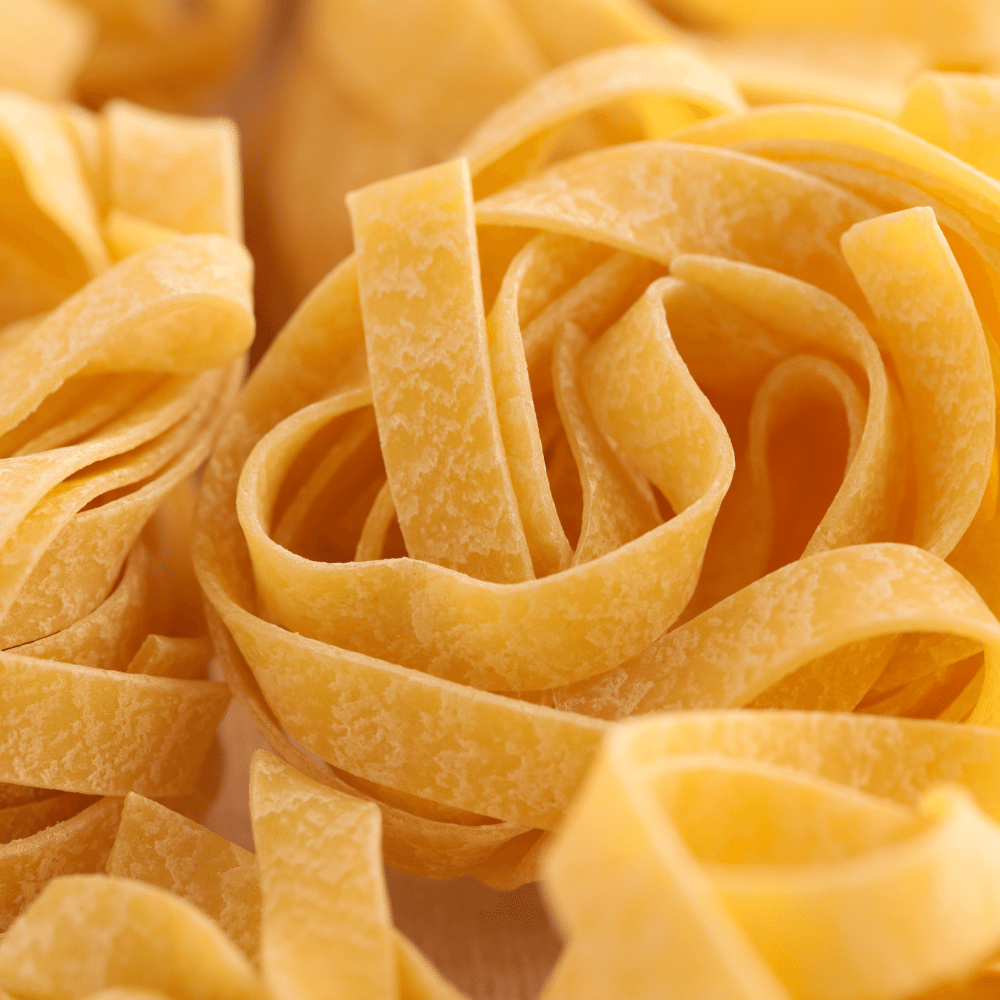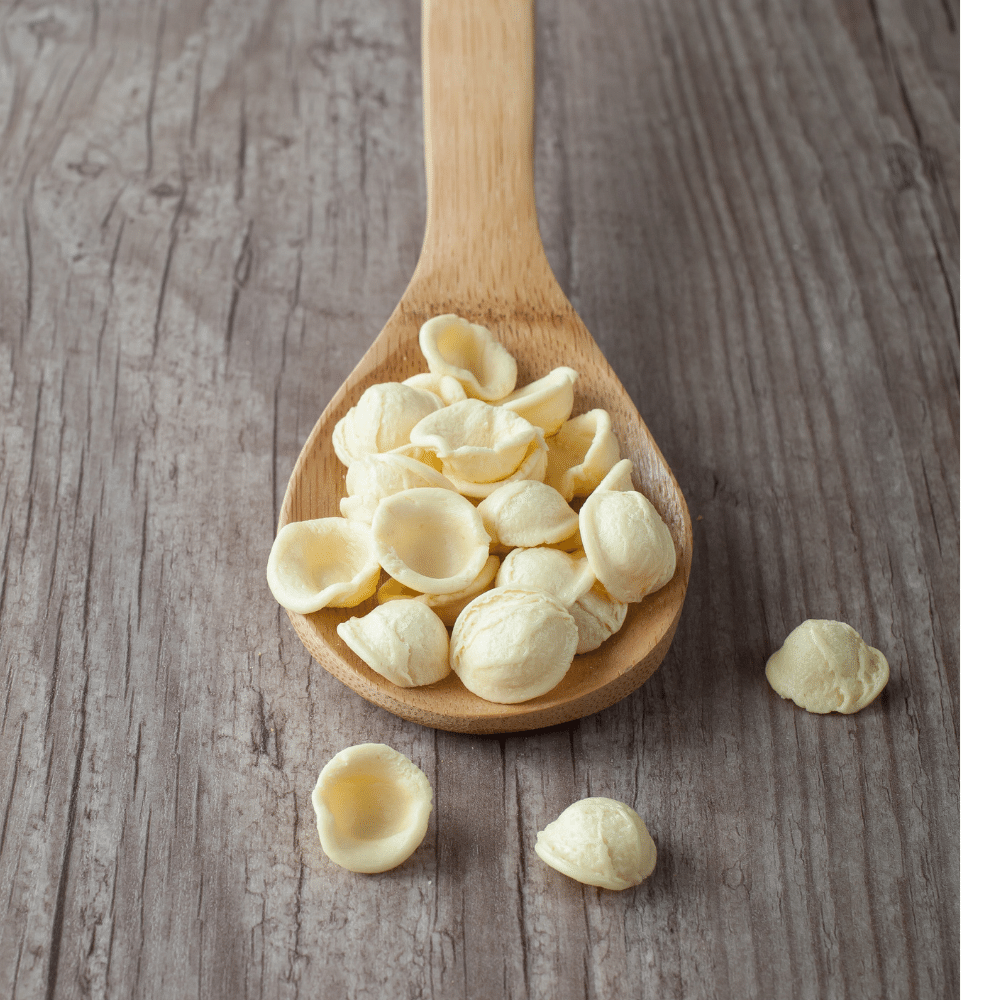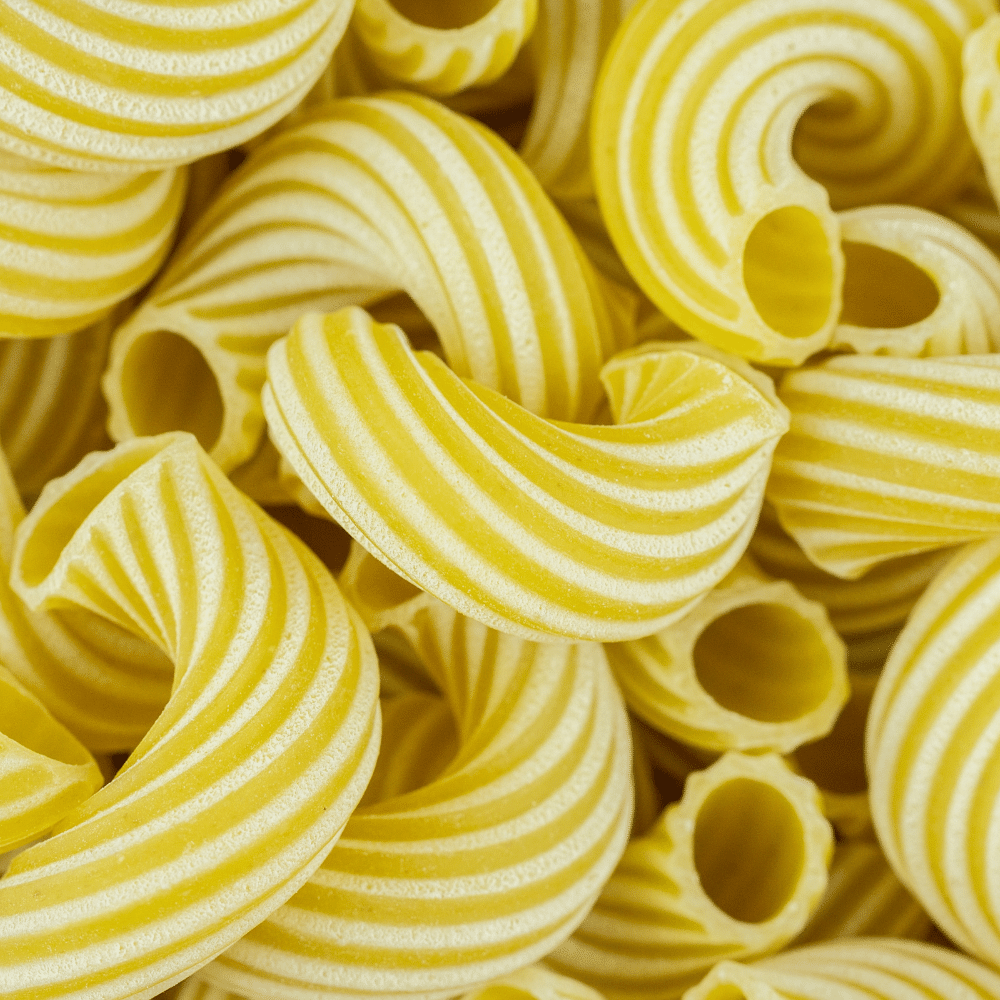If you love Italian cuisine, then you’ve probably had a taste of pomodoro sauce.
This classic tomato-based sauce is one of the most popular in the country and can be found in many restaurants around the world.
It’s simple to make at home too – all you need is some fresh tomatoes, garlic, olive oil and herbs.
But what type of pasta should you use?
The best pasta for Pomodoro sauce is spaghetti due to its shape and texture. Penne and rigatoni are also good choices, as their hollow shapes trap the sauce inside. For a lighter option, try angel hair or linguine.
But the answer depends on your personal preference and what kind of dish you are making.
In this article, I will share with you my top eight types of pasta for pomodoro sauce so that your next meal will be perfect!
What is Pomodoro Sauce?

Pomodoro sauce is a classic Italian tomato-based sauce that is typically served with pasta.
It’s made from tomatoes, garlic, olive oil, and fresh basil leaves.
The name “pomodoro” comes from the Italian word for tomato (pomodori).
The traditional recipe for pomodoro sauce calls for simmering peeled and chopped tomatoes in olive oil with garlic and fresh basil leaves until the mixture has thickened to a desired consistency.
Some recipes also call for adding onion or other vegetables such as carrots or celery to the mix.
Once cooked, the sauce can be blended into a smooth puree or left chunky depending on preference.
Pomodoro sauce is often used as an accompaniment to pasta dishes such as spaghetti alla carbonara or lasagna but it can also be used in other dishes like pizza or eggplant parmesan.
It’s also great served over grilled meats like chicken breasts or pork chops.
For added flavor, some cooks add red pepper flakes, oregano, thyme, rosemary, parsley, Parmesan cheese and/or cream to their pomodoro sauces before serving them over hot pasta dishes.
8 Best Types of Pasta for Pomodoro Sauce
Pomodoro sauce is a classic Italian dish that pairs perfectly with the right type of pasta.
But what is the best kind of pasta for pomodoro sauce?
Here are 8 types of pasta that will make your pomodoro sauce taste even better:
1. Penne

Penne is a type of pasta that is shaped like long tubes with ridges.
It is one of the most popular types of pasta, and it can be used in many different dishes.
Penne has a slightly chewy texture and holds sauce well, making it an ideal choice for pomodoro sauce.
Penne pairs particularly well with tomato-based sauces because its ridges help to hold onto the sauce better than other pastas.
The shape also makes it easier to scoop up bites of penne with your fork or spoon, so you get more flavor in each bite!
Pro Tip: To make sure your penne doesn’t stick together when cooking, add a tablespoon of olive oil to the boiling water before adding the pasta.
This will help keep the individual pieces separate as they cook!
2. Angel Hair

Angel hair is a type of pasta that is thin and long, resembling strands of hair. It is also known as capellini or fine vermicelli.
Angel hair pasta has a delicate texture and cooks quickly, making it perfect for light sauces like pomodoro sauce.
When cooked properly, angel hair should be al dente—tender but still slightly firm to the bite.
The thin strands are best served with light sauces that won’t overpower the delicate flavor and texture of the pasta.
Pomodoro sauce is an ideal pairing because its bright tomato flavor complements the subtle taste of angel hair without overwhelming it.
Pro Tip: To make sure your angel hair doesn’t stick together when cooking, add a few drops of olive oil to the boiling water before adding in the pasta!
This will help keep each strand separate so you can enjoy every bite!
3. Fettuccine

Fettuccine is a type of pasta that originated in Italy.
It is made from egg and flour, and has a flat, ribbon-like shape.
Fettuccine is often served with rich sauces such as Alfredo or pomodoro sauce.
Fettuccine noodles are thicker than spaghetti noodles and have a slightly chewy texture when cooked properly.
They also hold up well to heavier sauces like the classic Italian pomodoro sauce, which features tomatoes, garlic, basil, and olive oil.
The thick noodles can stand up to the chunky vegetables in the sauce without becoming soggy or falling apart.
Pro Tip: To make sure your fettuccine doesn’t get too soft while cooking it in boiling water, add a pinch of salt to the pot before adding the noodles!
This will help them keep their shape and texture while they cook.
4. Spaghetti

Spaghetti is a type of pasta made from durum wheat and water.
It is typically formed into long, thin strands and is commonly served with tomato sauce, meatballs, or other sauces.
Spaghetti can also be used in salads, soups, casseroles, and other dishes.
Spaghetti pairs perfectly with pomodoro sauce because the long strands of spaghetti are able to hold onto the thick tomato-based sauce.
The combination of the two creates a classic Italian dish that’s sure to please any palate!
Pro Tip: To make your pomodoro sauce even more flavorful, try adding some fresh herbs like basil or oregano while it simmers on the stovetop.
This will add an extra layer of flavor to your dish that will really take it up a notch!
5. Rigatoni

Rigatoni is a type of pasta that is shaped like large tubes.
It is slightly curved with ridges on the outside and a hollow center.
The name comes from the Italian word “rigato,” which means “ridged.”
Rigatoni is often used in baked dishes, as its shape helps it hold onto sauces better than other types of pasta.
Rigatoni pairs especially well with pomodoro sauce, as the ridges help to capture all of the delicious flavors and textures of this classic tomato-based sauce.
The hearty shape also stands up to chunky vegetables or meaty additions like sausage or ground beef.
Pro Tip: To make your rigatoni dish even more flavorful, try adding some freshly grated Parmesan cheese before serving!
6. Farfalle

Farfalle, also known as bow-tie pasta, is a type of Italian pasta shaped like butterflies or bows.
It is made from durum wheat flour and water and comes in various sizes.
Farfalle is often used in salads, soups, casseroles, and other dishes.
Farfalle pairs particularly well with pomodoro sauce because the shape of the pasta helps to hold onto the sauce better than other types of pasta.
The ridges on farfalle create little pockets that trap the sauce for maximum flavor!
Pro Tip: To make sure your farfalle doesn’t stick together when cooking it, add a tablespoon of olive oil to the boiling water before adding your farfalle.
This will help keep them separate while they cook!
7. Orecchiette

Orecchiette is a type of pasta that originated in the Puglia region of Italy.
It is shaped like small ears, hence its name which translates to ‘little ears’ in Italian.
Orecchiette are usually served with tomato sauce and vegetables, but they can also be used in soups or salads.
Orecchiette’s shape makes it perfect for holding onto sauces and other ingredients, making it ideal for dishes like pomodoro sauce.
The ridges on the surface of the pasta help to capture all the flavors from the sauce, creating a delicious combination of textures and tastes.
Pro Tip: To make your orecchiette even more flavorful when serving with pomodoro sauce, try adding some freshly grated Parmesan cheese or chopped fresh herbs such as basil or oregano!
8. Cavatappi

Cavatappi is a type of pasta that is shaped like a corkscrew.
It has ridges on the outside and a hollow center, making it perfect for holding sauces.
Cavatappi is often used in baked dishes or with tomato-based sauces such as pomodoro sauce.
Cavatappi’s shape makes it great for scooping up chunky sauces, and its ridges help to hold onto the sauce better than other types of pasta.
The hollow center also helps to trap bits of vegetables or meat, making each bite more flavorful.
Pro Tip: To make sure your cavatappi cooks evenly, give it an extra stir halfway through cooking time so that all the pieces are submerged in water!
FAQ
Is Pomodoro sauce the same as marinara?
No, Pomodoro sauce is not the same as marinara. While both are made from similar ingredients, such as tomatoes, onions, garlic, and herbs, the difference lies in the texture and consistency.
Pomodoro sauce is thicker and smoother than marinara, which typically contains tomato chunks that make it more watery.
Additionally, Pomodoro sauce often includes additional ingredients such as cream, butter, and/or cheese, which are not found in traditional marinara. As a result, Pomodoro sauce has a richer, creamier flavor than marinara.
What is the difference between spaghetti and spaghetti pomodoro?
The primary difference between spaghetti and spaghetti pomodoro is the sauce. Spaghetti is traditionally served with a variety of sauces, such as marinara, pesto, or carbonara. Spaghetti pomodoro, on the other hand, is served with a tomato-based sauce that is commonly referred to as “Sugo al Pomodoro” in Italian.
This sauce is typically made with tomatoes, olive oil, garlic, and basil, creating a delicious and flavorful dish. While spaghetti pomodoro is commonly served with spaghetti, it can also be served with other types of pasta, such as penne or fettuccine.
Is Pomodoro sauce the same as tomato sauce?
No, pomodoro sauce is not the same as tomato sauce. While both sauces are made with tomatoes as the main ingredient, pomodoro sauce is typically cooked with olive oil, garlic, and basil to give it a unique flavor.
Tomato sauce is usually cooked with onions, spices, and sometimes sugar and is typically sweeter and less acidic than pomodoro sauce. In addition, pomodoro sauce is a more traditional Italian sauce, while tomato sauce is an American staple.
Where is spaghetti pomodoro from?
Spaghetti Pomodoro is a classic Italian dish that originated in the southern region of Italy, specifically Campania. It is also known as “pasta al Pomodoro” or “tomato basil pasta” due to its main ingredient: tomatoes.
The word “pomodoro” in Italian translates to “tomato,” and the sauce is made with tomatoes, olive oil, garlic, and basil. It is a popular Italian dish in the US and around the world, and is a staple in many Italian restaurants.
Conclusion
In conclusion, there are many types of pasta that are perfect for pairing with pomodoro sauce.
From penne to farfalle, the possibilities are endless.
The best types of pasta for pomodoro sauce are penne, angel hair, fettuccine, spaghetti, rigatoni, farfalle, orecchiette, and cavatappi.
Each of these pastas has its own unique texture and flavor that pairs perfectly with the creamy and flavorful pomodoro sauce.
Whether you want something light and delicate or a hearty dish that will fill you up, there’s a pasta for every occasion.
So, the next time you’re in the mood for Italian, try out one of these pastas and enjoy a delicious meal with pomodoro sauce.

8 Best Types of Pasta for Pomodoro Sauce
Ingredients
- Penne
- Angel Hair
- Fettuccine
- Spaghetti
- Rigatoni
- Farfalle
- Orecchiette
- Cavatappi
Instructions
- Pick your favorite substitute from the list above.
- Follow cooking directions for your selected substitute with the proper ratio of ingredients.
Jenny has always been passionate about cooking, and she uses her platform to share her joy of food with others. Her recipes are easy to follow, and she loves giving tips and tricks to help others create their own unique culinary creations.

